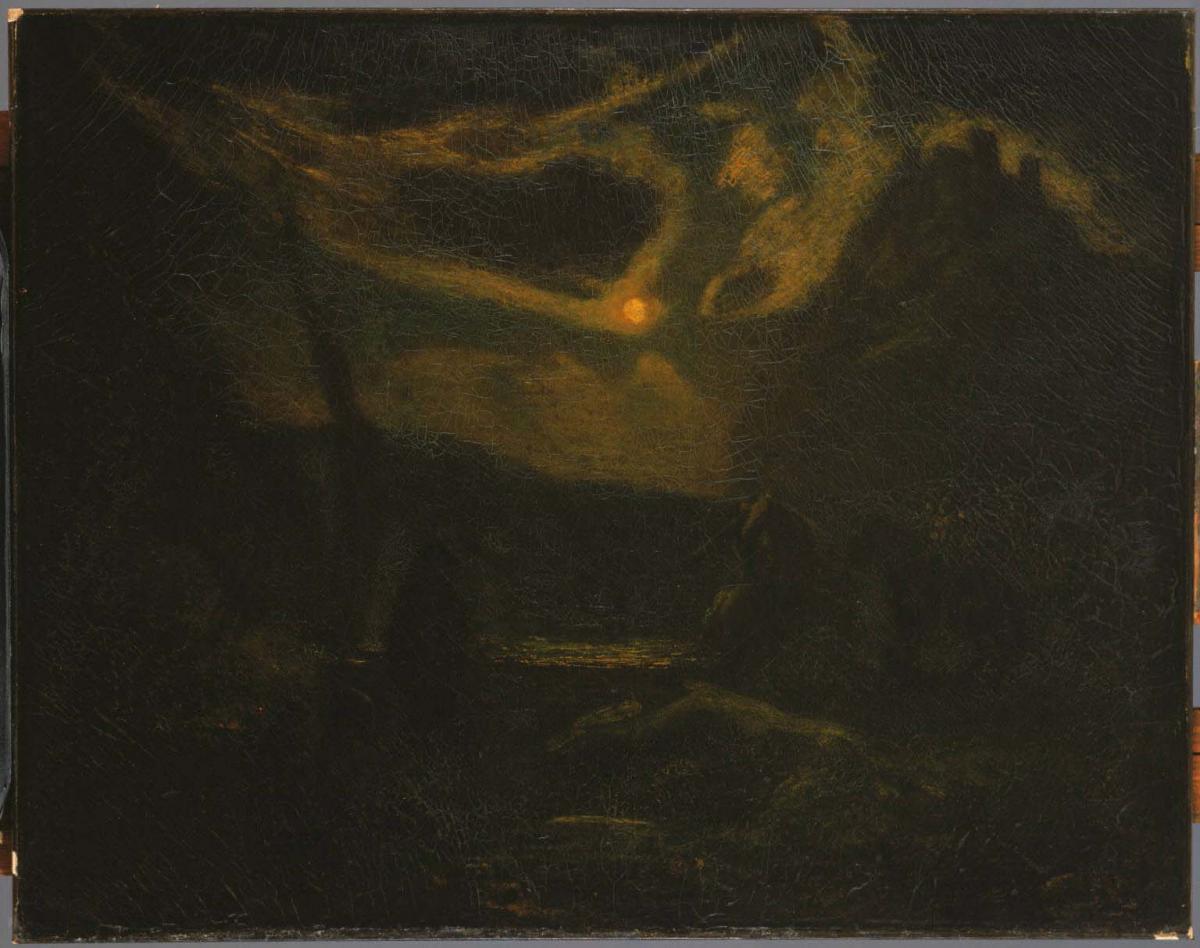Macbeth and the Witches
Albert Pinkham Ryder ( after mid-1890s )

Based on act 1, scene 3 of Shakespeare’s Macbeth, Ryder’s Macbeth and the Witches engages with the theme of supernatural intervention in human events and man’s helplessness in his mortal confrontation with such forces. In a foreboding scene, Macbeth and Banquo, military leaders of the Scottish king, encounter the three Witches, who prophesize the chain of violent events to come. The turmoil is prefigured in the tortured landscape. Ryder had approached the same subject in an earlier, smaller painting of the same title, which he had begun in the early 1880s. By 1899 or even earlier, he had started the present version for Dr. Sanden, Ryder’s principal patron. Sanden’s correspondence with Ryder between 1905 and 1913 outlines the artist’s slow progress, although Ryder was optimistic in 1899, when he wrote that “the Macbeth…more slowly…will grow in grandeur and soon have a light and charm that I wish to be in it.”
The long, arduous creation of Macbeth and the Witches typifies Ryder’s works begun in the mid-to-late-1890s. Chronic eye trouble, aggravated by age, further impeded Ryder’s progress. Yet, according to his own account, time was needed to achieve the proper spiritual inspiration: “Art is long. The artist must…await the season of fruitage without haste, without worldly ambition, without vexation of the spirit.” This almost ritualistic approach may have grown out of Ryder’s perhaps unconscious desire to delay separation from his work.
The present darkened and cracked surface of the painting, an object lesson in Ryder’s unsuccessful experimentation with unorthodox media and methods, impairs a thorough reading and interpretation. Accounts by Ryder’s friends, including painters Julian Alden Weir and Marsden Hartley, describe the darkening condition and mistreatment of the painting during Ryder’s lifetime. Ryder tried unsuccessfully to correct the darkening by sanding the surface and reworking the image.
In 1911, Walter Pach published an admiring article on Ryder in which he meticulously described the painting: “[W]e may see [Shakespeare’s scene] realized in Ryder’s Macbeth and the Witches, in all its dramatic intensity, this weird vision of a night torn by storms. The clouds are swept into tatters, the dark blue of the sky is seen through the rifts….[I]n the darkness, are two little figures of horsemen—like Greek statues for the spirit of their action….[A]t the center of the picture—one of its great surprises and delights—there is a gleam of golden and luminous water.”